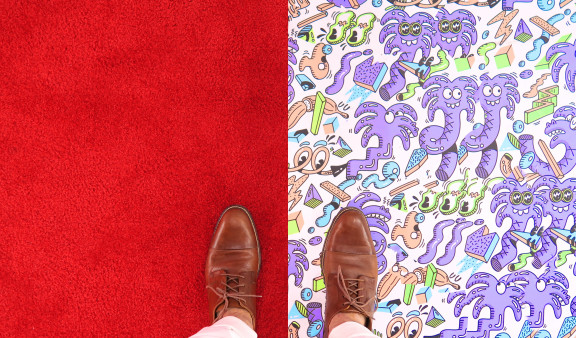
Marketing design serving business performance
Design can put across a brand's values, positioning and strategy without using words. Things like visual identity, the logo and product design are basic elements of a brand's image and they lastingly enter peoples' consciousness as clear markers of brand recognition.
THE MANY FACES OF DESIGN
Brand design is the essence, or DNA, of a brand. Digital design, or interface design, adapts the brand's DNA to serve the user experience and optimisation of the various digital media used by customers. Marketing design is another form of expression of the brand. Marketing design tells stories and carries more spontaneous, ephemeral messages.
It evolves over time, positioning itself within trends or disrupting them. As the name suggests, marketing design has marketing and business objectives, such as converting prospective customers, increasing sales and engaging customers. By adapting to current events, it is part of the day-to-day operation of a brand and its products. It describes products in the present moment, in order to arouse immediate desire.
HOW IS IT APPLIED?
Marketing design is based on a strategy of promoting products by creating added value and user scenarios. Sales operations are rolled out in seasonal campaigns. They have a predetermined lifetime, which allows more freedom of expression in terms of design. This approach leaves room for experimentation and departures from the brand's corporate image can be tested using offbeat or fun adaptations.
The ephemeral nature of the marketing campaign makes it easy to deploy the basic building blocks of business performance: 'test and learn', responsiveness and adaptability! E-merchandising, email campaigns, competitions, promotional offers... Marketing design for the product offering takes many forms in order to meet marketing challenges. Last winter, we worked on a platform, for a women's fashion brand, that enabled customers to create their perfect festive season look. In addition to a chance to win items, customers could explore the "festive" fashion selection.
Scenarios were created for the selection outside of the traditional e-commerce website, in a dedicated space, which highlighted products in a distinct graphical style, greatly increasing their attractiveness. In terms of the brand, the aim was also to gauge which products attracted customers the most, and adapt product merchandising accordingly, before the all-important festive season. Two marketing objectives were achieved: highlighting the products and improving knowledge of customer needs.
Beyond image, the message is also a determining factor in the performance of a marketing campaign. Significant editorial work is essential to create a story to tell, as well as to adapt wording, arguments and tone in order to bring the message to life. In marketing, we often have to create an impact with only five words, so we need to choose the right words and get straight to the point!
THE CULTURE OF NOW
Marketing is also about the culture of now. While the product may remain the same, the marketing surrounding it must constantly adapt to the target, the moment, the medium and the trend. Marketing design helps brands keep their products and solutions moving forward. We need to be able to talk about the same product from a constantly varying perspective and find new ways to create user scenarios.
What is the real challenge of marketing design? Creativity and responsiveness! We need to be part of a trend, and even part of news, and produce creative content fast to meet major business challenges, while ensuring the brand's underlying principles are respected. In short, design must create meaning and meet marketing challenges. Being "attractive" is not enough to perform well. Design aesthetics, as an end in itself, does not necessarily make it possible to achieve tangible objectives for the brand's business. It may look good, but is it effective?